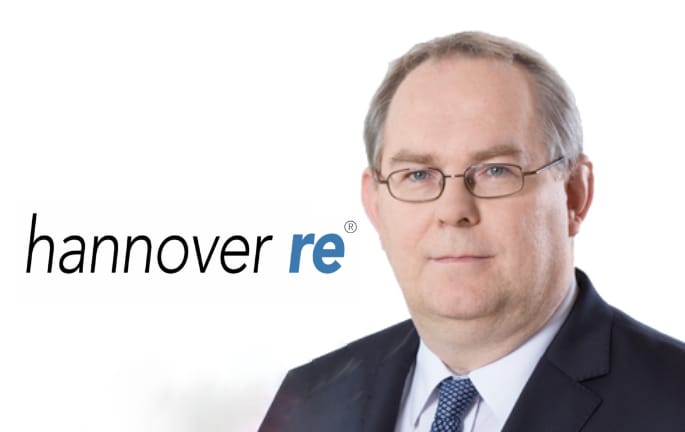Significant retro buy limits nat cat appetite but there’s room to grow: Hannover Re’s Althoff

German reinsurer Hannover Re has purchased a significant amount of retrocession protection in 2023, and while this has limited its growth appetite in the natural catastrophe space, the company has sufficient room to expand its appetite should opportunities present themselves, according to Sven Althoff, Member of the Executive Board, P&C, Hannover Re.
We reported previously that Hannover Re has increased its natural catastrophe retrocession protections for 2023, including taking its capital markets backed K-Cessions quota share sidecar facility to the biggest it’s ever been, at $831 million.
Today, the reinsurer announced a positive set of results for the first half of 2023, and during the related earnings call, management discussed the firm’s retro activities and how this plays into its appetite for nat cat risks.
“On the nat cat side, we are well within our defined risk appetite. As you know, we have bought a significant amount of retrocessional coverage, which has limited the growth in our appetite,” said Althoff. “Due to the long-term view we take on client relationships, it was important for us to be able to write more business on a gross basis without distorting the long-term expectation from our clients, hence the additional retro buy.”
He went on to explain that from this viewpoint, the reinsurer continued to shift from pro-rata to excess of loss at both the June and July renewals, placing greater emphasis on events versus aggregate covers.
“So, those trends in our portfolio are very similar to what we reported on the first of January renewals. And we would have enough room to continue growing our nat cat risk appetite during the course of the year if short term opportunities should arise. But for the time being, the increase compared to last year is not very significant due to the additional retro buy,” said Althoff.
As reinsurers off all shapes and sizes continue to shift away from lower layers and frequency events, Hannover Re was questioned on whether there’s been any increase in demand from cedents for these layers, and if the firm or the market would be ready to write this business.
Althoff explained that given many clients are working to a reinsurance budget, the question is how much are they willing to spend?
“Given inflation, many of them had the need to buy additional vertical top-end coverage. So, therefore, it was a combination of those budgetary considerations, and the hardening of the reinsurance market, that we saw low layer cat move retentions up and to a certain degree disappear.
“Structurally, there would of course be demand from the ceding companies to also buy at a lower level. But as I said, given how much they are willing to spend, how much they need to cover vertically, we are not expecting reappearance, given also what Jean-Jacques said about the cycle, of lower layer cats any time soon,” said Althoff.
At the same time, Hannover Re is not anticipating a “major comeback of aggregate protections,” said Althoff, highlighting that these, from both a buying and selling point of view, were de-emphasised over the last year or so.
“Again, it’s an area where clients like to buy the coverage but often enough, they have to make a decision where to put the money, and most clients made certain that they had enough vertical event coverage in place and therefore the emphasis on lower layers and aggregate layers.
“Would be potentially write them? Well, that always depends, at the right price we would be able to look at it, but it’s fair to say that both low layer cat and aggregate protections are not our sweet spot when it comes to natural catastrophe business,” said Althoff.
In light of the higher attachment points now seen in the nat cat space, Hannover Re was questioned on its retro buying and specifically whether it perhaps has too much and would potentially be required to purchase higher attaching excess of loss retro given that cedents are now retaining more.
Althoff explained that the company has increased its retentions on both its non-proportional towers, which was a reflection of the quality of the business it’s taking in, meaning the firm was willing to take on more exposure.
“On our proportional vehicle, K, your question was do we have too much. And from a risk point of view, you can say that we have slightly too much. But then you have to remember that the nat cat experience of the industry has been challenging over the last couple of years.
“And given that particularly K we view as a long term strategic partnership with our retrocessional partners, we of course also wanted to honour pay back obligations we had under the contract. So, from that point of view, the amount of placement under K, it was driven by two aspects; one, risk aspects, but also very clearly reflecting on the balance those partners have accumulated with us over the last number of years,” explained Althoff.
Earlier this year, Hannover Re executives spoke to Artemis about its long-standing relationships with investors and how this enables it to grow its proportional retrocession programme, known as K-Cession.






